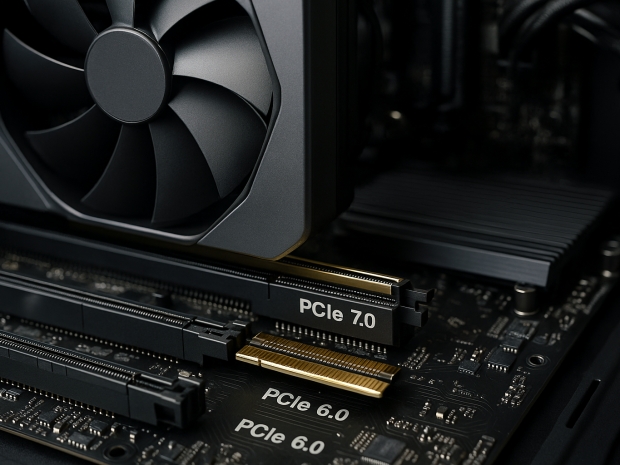According to VideoCardz, the standards wranglers at PCI-SIG have been promoting PCIe 7.0, touting its blistering speed. It is reportedly capable of reaching 128GT/s, which would double the throughput of PCIe 6.0, itself a doubling of PCIe 5.0's throughput.
This means that up to 16 lanes in a single slot could shift a theoretical 512GB/s of bandwidth, combined in both directions. For those not in the know, PCIe lanes are the invisible tracks shunting data between your graphics card, SSD, and the rest of the motherboard.
While all this seems tasty PCIe 7.0 is still at the doodle-on-a-napkin stage. The current reality for most gamers is PCIe 4.0, if that. Even PCIe 6.0, announced in January 2022, has barely shuffled out the door, though some brave manufacturers might sneak compatible kit out later this year.
So you can forget PCIe 7.0 appearing in your desktop until the tail end of the decade. Before then, it’ll be busy trying to justify itself in data centres, quantum boxes and other lab coat-heavy environments.
Not content with that, PCI-SIG has confirmed that it has already begun preparations for PCIe 8.0. Because we needed that.
In the short term, though, this fast-track arms race means bugger all to most consumers. Even the swankiest GPUs aren’t choking on PCIe 5.0 yet. What’s holding back performance isn’t the bus, it’s poor decisions like sticking 8GB of video RAM in cards like the RTX 5060 Ti. On PCIe 4.0, that GPU can lose its edge. Plug it into a PCIe 3.0 slot and the performance nosedives like a duck on roller skates.
There are niche scenarios where PCIe limits get in the way, but they’re the exception. However, the relentless march of PCIe standards might one day cushion the blow of such shonky design decisions.
Still, keeping the spec moving is vital to prevent the whole PC ecosystem from tripping over its cables. It’s not glamorous, but someone has to make sure your components still speak the same language.




